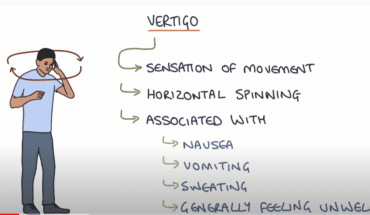Twins generate a great deal of excitement and curiosity, and with the increasing frequency of twin births as a result of IVF and later age of conception, amongst other factors, it is important to understand the true nature of twinship and how it affects, and is affected by, us all.
In particular, we need to be aware of the subversive aspects of the twin relationship, as well as common misunderstandings about twins based on our own personal longings and projections.
In particular, we need to be aware of the subversive aspects of the twin relationship, as well as common misunderstandings about twins based on our own personal longings and projections.
By subversive I mean the powerful unconscious factors that operate both within the twin relationship and between twins and others, without us being properly aware of them and their impact on us.
What is the first question people ask when they see a twin buggy?
ARE THEY IDENTICAL?
This question points towards two major issues for twins:
Firstly, we seem to be fascinated by twins and seeing two who look very alike generates both a disturbance and excitement in us. Central to this fascination is our own personal longing, an essential loneliness, and a search for perfect understanding. This longing originates in our own earliest infantile experiences and memories of a mother who seemed to provide an ideal understanding without words. So when we see twins, especially ones that look very alike, the twins appear to have what we all long for – a perfect soul-mate. Our fascination with twins, our perceptions of them and projections onto them has an impact on their development, especially in creating a sense of identity in relation to others.
Secondly, the twinship is an intense and particularly intimate bond based on internal, external and developmental factors. The indelible core of the twin relationship will affect all the twins’ relationships both within and outside the twinship. Twins share a deep psychic bond that forms the core of their twinship, but they are NEVER identical. Even though some twins are genetically very similar, genes alone do not make personality.
Twins share a deep psychic bond that forms the core of their twinship, but they are NEVER identical. Even though some twins are genetically very similar, genes alone do not make personality.
Many factors will affect each twin’s development including the early mutual resonances and pre-verbal sensate experiences between them (originating in utero and affective throughout early and later years), as well as parental and societal attitudes in raising them.
Our perceptions of twins dictate how twins are treated in their families, in society, in various cultures throughout the world, modern and ancient, and this is reflected in literature about twins. Twins may be idealised and regarded as gods, or despised as evil harm-bringers and murdered. They may be viewed as two parts of one person, or their uniqueness and individuality would, more hopefully, be recognised. Understanding the roots of these perceptions of twins will affect how we deal with a twin in all fields of life. It will also inform us about the core of intimacy and the dynamics of the twin relationship.
The internal dynamics of the twin relationship and the factors that crucially affect and shape it are diverse: They will include the nature of the internal twin bond; the twins’ relationships with mother and father and siblings, including their perceptions about the twin relationship; the twins perceptions of each other within the intricately bound twin relationship; each twin’s perception of the other twin’s relationship with mother and father; and the outside world with its expectations and strictures on twins. It is essential to enable twins to develop individually within the twin relationship and not remain as a bound twin pair.
Twinship is a complex relationship that offers unparalleled companionship, but also generates intense (sometimes murderous) rivalry. Where the twinship remains enclosed and exclusive to outside influence and other relationships, problems will arise for each twin. This may be extreme, as with the Gibbons sisters (as described by Marjorie Wallace in 1996), and in this situation emotional development will be stunted. The potency of the internal twinning will vary in each twin relationship and over time. But the enduring core of the twinship is ever-present throughout the lives of twins and even after the death on one twin.
This is the area where the twinship can become subversive. For all twins, the core of their twin relationship may be active within other relationships in their lives, as the tendency to “twin” with other intimate partners is unconsciously enacted.
This is the area where the twinship can become subversive. For all twins, the core of their twin relationship may be active within other relationships in their lives, as the tendency to “twin” with other intimate partners is unconsciously enacted.
This twinning may occur between a twin and other siblings, with close friends, partners and spouses. Parents who are twins may “twin” with their children. There is an intense dynamic to coerce the other person into a twinship with the twin. The twinship is the closest and most fundamental relationship the twin has had (even with good maternal provision), and a twin has never been a singleton. As we all unconsciously create relationships within our own frameworks, so twins will create twinships in theirs.
It is essential for those parenting or working with twins to recognise this, to enable the healthy development of each twin as an individual within the twin pair, and not just as a twin couple. The bond between a child and its parents is a developmental one, whereas the twin bond lacks the generational difference necessary to enable growth towards maturity. If parents, teachers, and practitioners of all kinds working with twins understand the deep nature and qualities of the twin relationship, they will be aware of sometimes being caught up in unhelpful (twinning) dynamics in relation to the twins, and they will be able to help the twins develop to their full potential.
Vivienne Lewin
Vivienne Lewin is a Psychoanalytic Psychotherapist, now retired from clinical practice. She has written extensively on twin relationships based on her clinical experience and research. She has written two books, The Twin in the Transference (2004, 2014), and The Twin Enigma (2016), edited a book on siblings, and written several papers on twins.
- Twinship: a subversive relationship - 16th April 2018








Thank you Vivienne. Put so clearly as you have, it all seems self-evident. It helps me to clarify the underlying needs, the parallels, in the relationship between my ex wife, a twin, and our son. And though I am eternally grateful for the way she took care of him through all the awful times, I do sometimes wonder whether, in seeking to recover her twin (who lives a continent away) she infantilized him in some desperately subversive way to keep him with her forever… perhaps frustrating his own efforts to free himself from her and realize his own potential. Could… Read more »